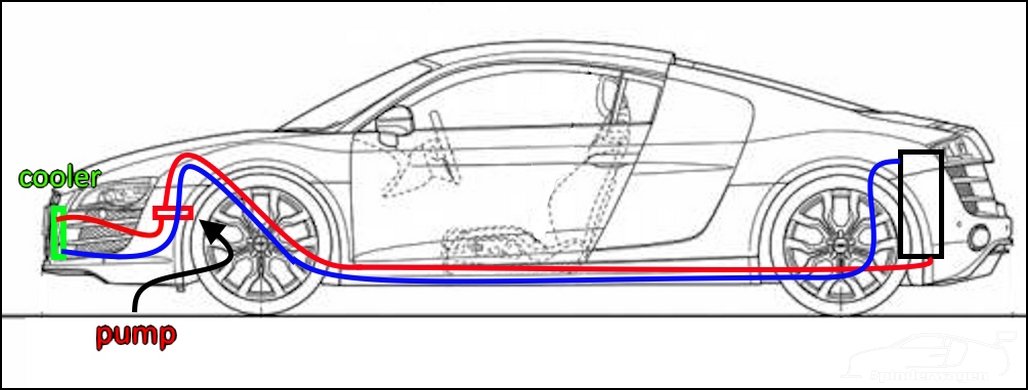A road R8 has many similarities with the GT3 version, such as the dry sump oil system, however cooling is one area the cars have a large difference, the GT3 cars remove the frunk and have a multitude of radiators and coolers, however in comparison the road cars only have a single air to oil cooler in the left blade and run a water to oil heat exchanger. Due to this it is common for road R8’s to have high oil temperature problems when used on track. I’ve read pretty much every thread out there about possible solutions and nothing really stands out as being proven and giving sufficient extra cooling that I need.
The car has a dry sumped system from the factory and I was extremely aware that this system was designed by Audi engineers and works perfectly with no long term issues even though this design is over 15 years old, any modifications to the system risks impacting the the oil flow around the engine and increases the chances of an engine failure and the associated huge repair costs are something I certainly want to avoid.
I was also conscious of was keeping the original parts, it means sourcing a replacement whilst at a track is a possibility, a stone through a cooler whilst at the Nurburgring could be the end of the trip, but if I keep the original cooler and lines, I can source a replacement whilst I`m in Germany. I did consider modifying the return from the air cooler back to the tank with some AN10 fittings and extra inline cooler, but I just wasn’t happy with modifying the original lines and making it fully custom.
From looking at the diagram below, the obvious solution is to replace the existing oil cooler with a larger one. Getting a custom cooler made to fit in the restricted space is possible, but I’m not sure it would give sufficient on track cooling to justify the cost. On the road there is a thermostat that ensures the oil stays around 98degrees and only opens above that to flow through the air cooler.
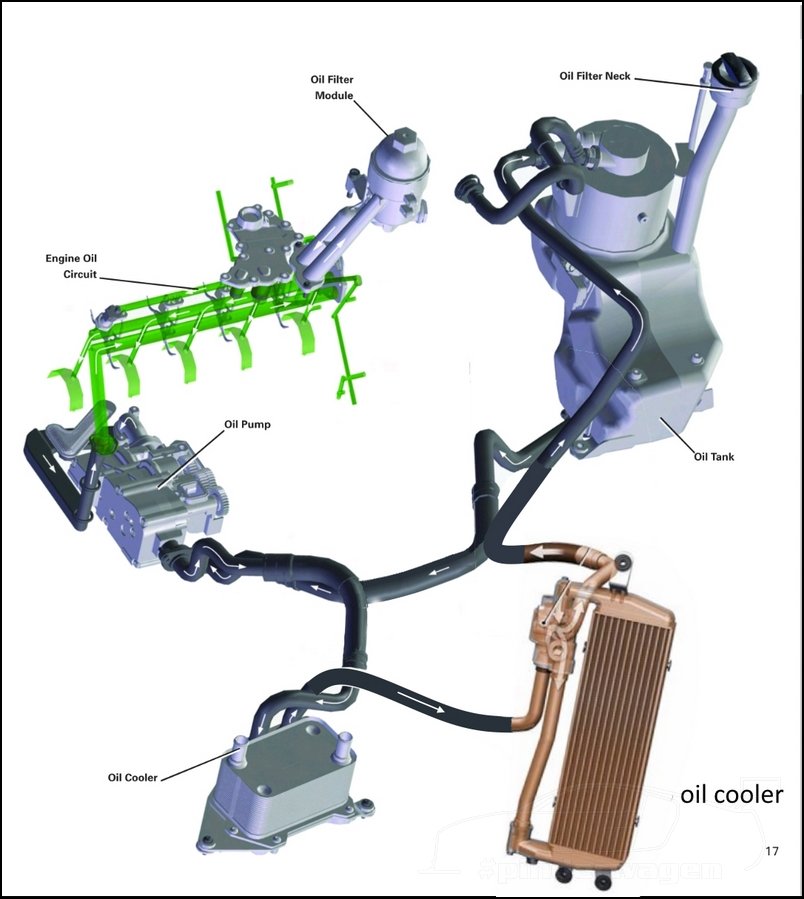
The dry sump tank is a large oil reservoir, with internal baffles and air seperator that feeds the oil pump, goes through the engine then back to the tank.
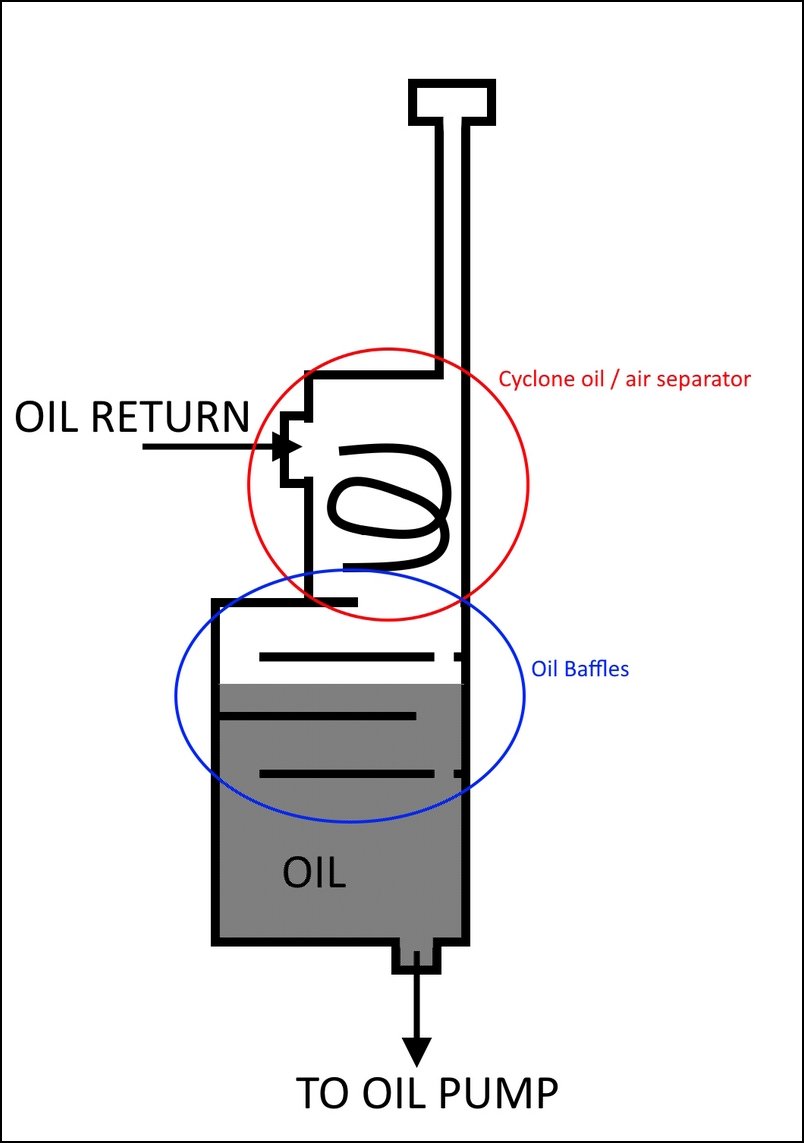
Bearing all this in mind, I decided to add a secondary oil cooling system. Instead of plumbing the additional cooler in series with the existing one I went a completely different route.
I decided to add a remote oil pump, lines and cooler which takes oil from the dry sump tank, pumps it through the oil cooler and back to the dry sump tank. This means the system can be controlled independently and should it fail, I can still drive the car. I searched online for other examples of this approach but couldn’t find any. The fact I couldn`t find anyone else who had done it made me question if it would work and was a good idea. The principle seemed sound so I decided to give it a go and if it didn`t work, I’d have to look at a custom replacement for the OEM cooler.
The cooler is a Setrab 464COMF-12 2P cooler. It`s a slim version of the cooler I ran on the Golf.
The pump is a Marco UP6 12V Gear pump, it’s a low pressure pump but can circulate 26Litres per minute. I don`t need a high pressure system, the dry sump tank is at atmospheric pressure, I just need a high enough flow.
When searching for a suitable cooler and gear pump I spoke to Matt at Think Automotive. I’ve dealt with him many times over the years, my Accusump was sourced from them and I find his approach to be exactly what I look for in a company. He explained a different pump wouldn’t actually be suitable for what I need even though it was more expensive and my initial choice when I contacted him..
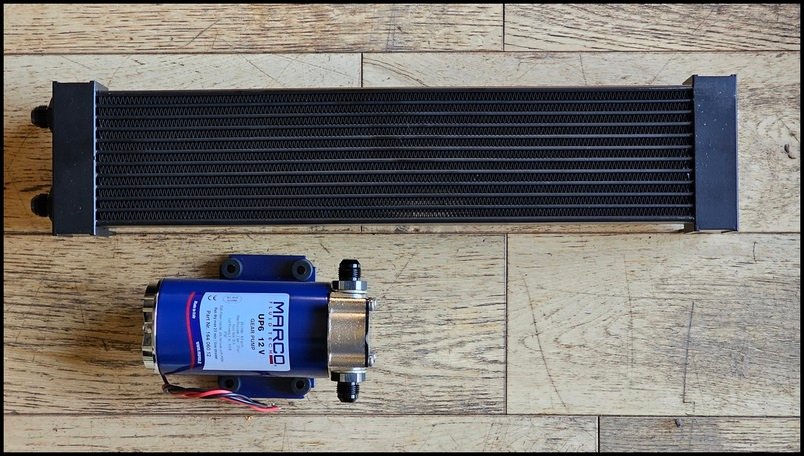
I mounted the pump at the front of the car, just ahead of the steering rack on the chassis leg. There are rubber mounting washers between the bracket and the chassis to reduce vibration.
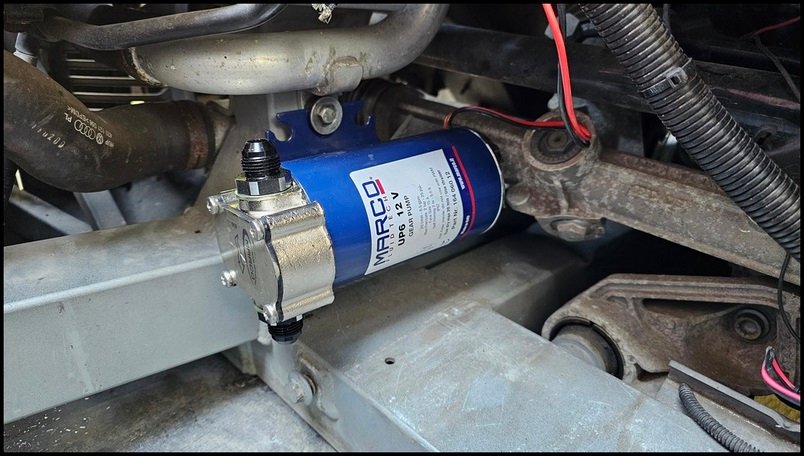
The eagle eyed will notice the fittings seem quite small, they are AN8, before you say that’s not big enough, you need to understand the setup. There is no need to go larger and the routing from the rear of the car to the front is very limited due to the central tunnel already carrying the coolant feed and return, the A/C, power steering and propshaft. There is not much clearance left for anything else and trying to run AN10 or AN12 would not only be problematic, but completely unnecessary. I am not pumping the oil in the engine, just the excess in the tank.
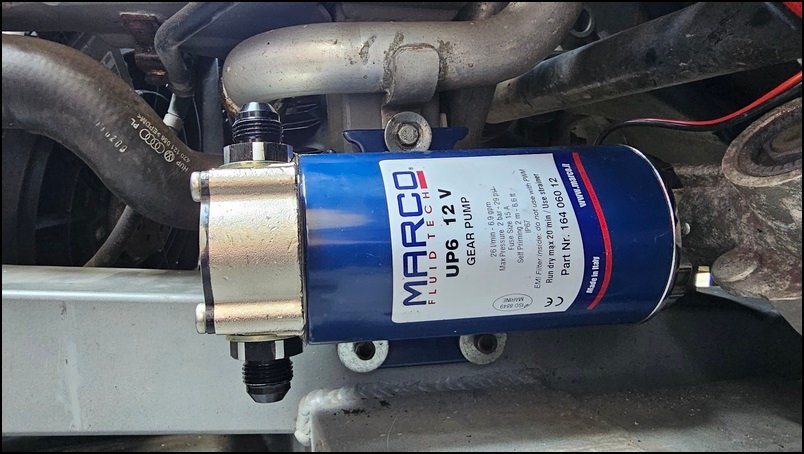
This may help explain the layout. The anti-syphon loop is to ensure the cooler and pump remain full and don’t t drain back to the dry sump tank when the system is off. Not only does this mean the level in the tank is accurate when I measure it, but the pump is always primed.
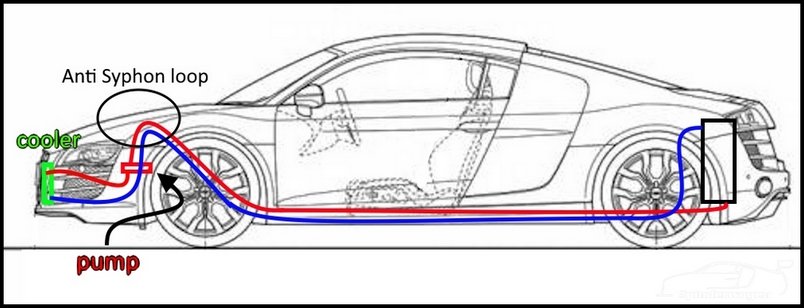
In practice, the anti-syphon is simply routing the pipe above the chassis and back down again.
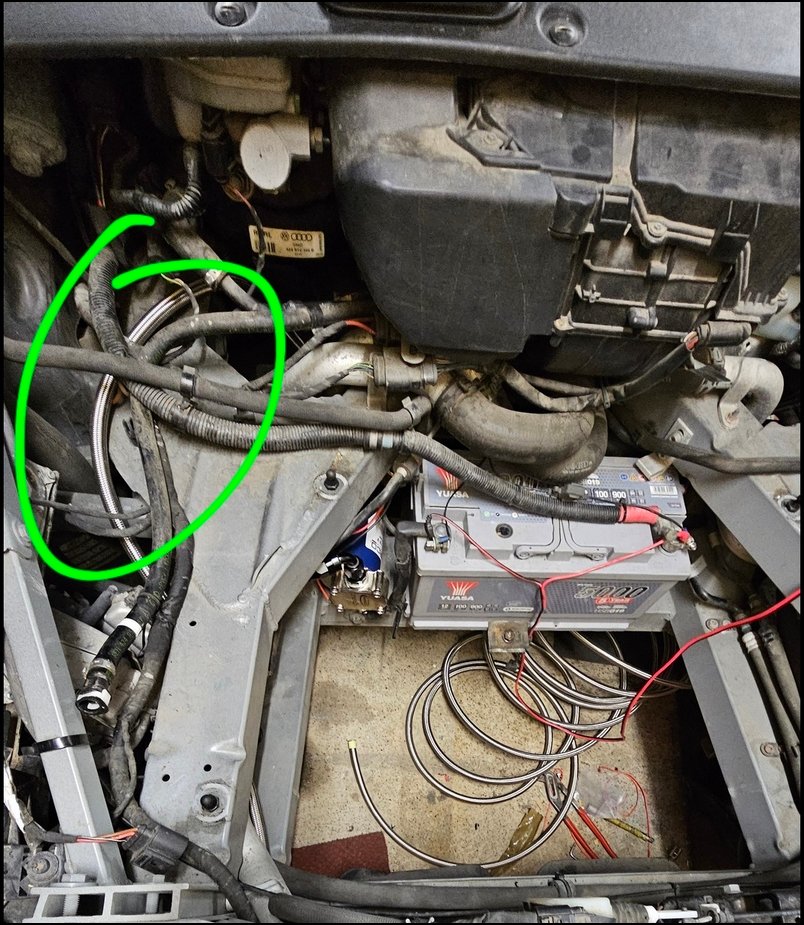
The cooler, located infront of the centre radiator, is hard mounted to some custom brackets which fasten to the chassis via rubber bobbings. There are also 2 additional water radiators at each side of the car. I was able to keep the original shroud to improve airflow through the cooler.
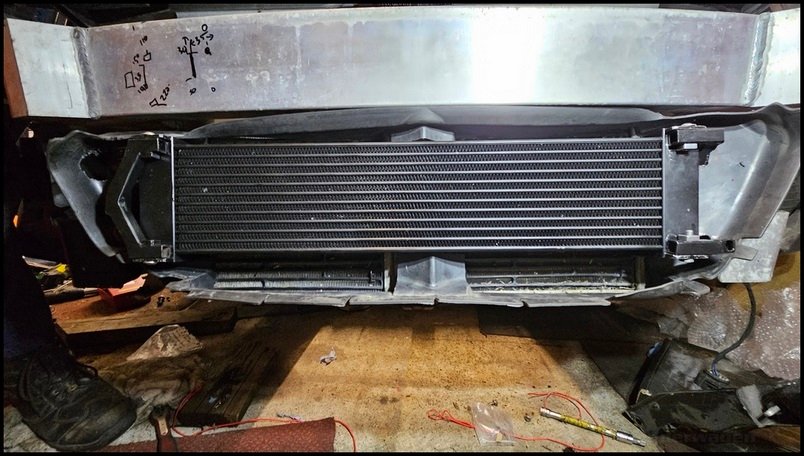
Getting the oil out of the dry sump tank was the first hurdle. I wanted to make use of the existing M14 tapped hole, so bought an M14 > AN8 fitting.
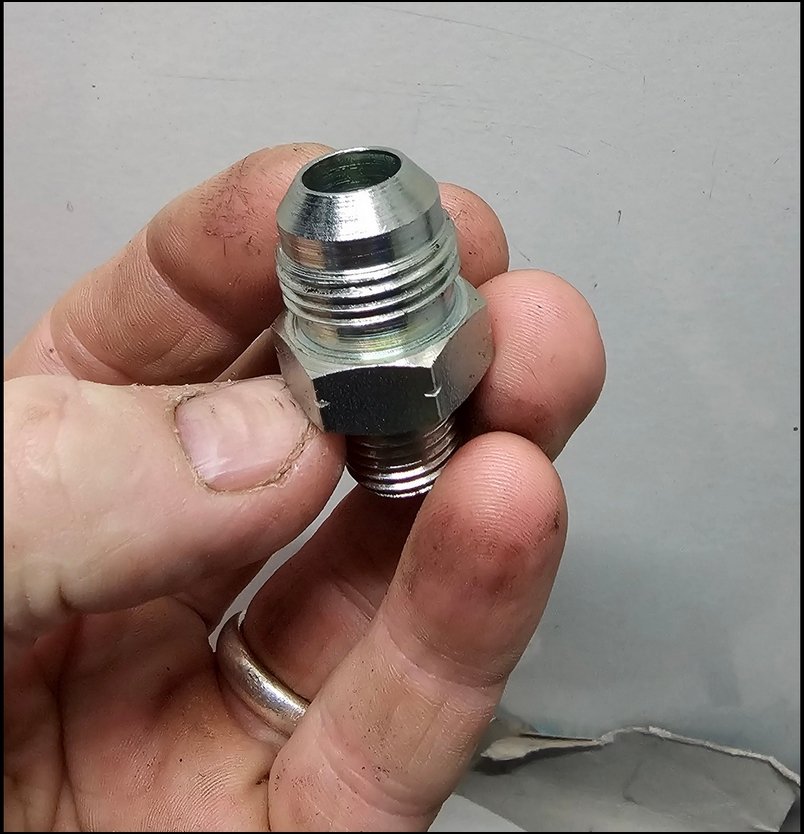
I enlarged the inside of the M14 section to enable a length of pipe to sit into it. (I’m sure a few of you will be able to see where I’m going with this but all will become clear later)
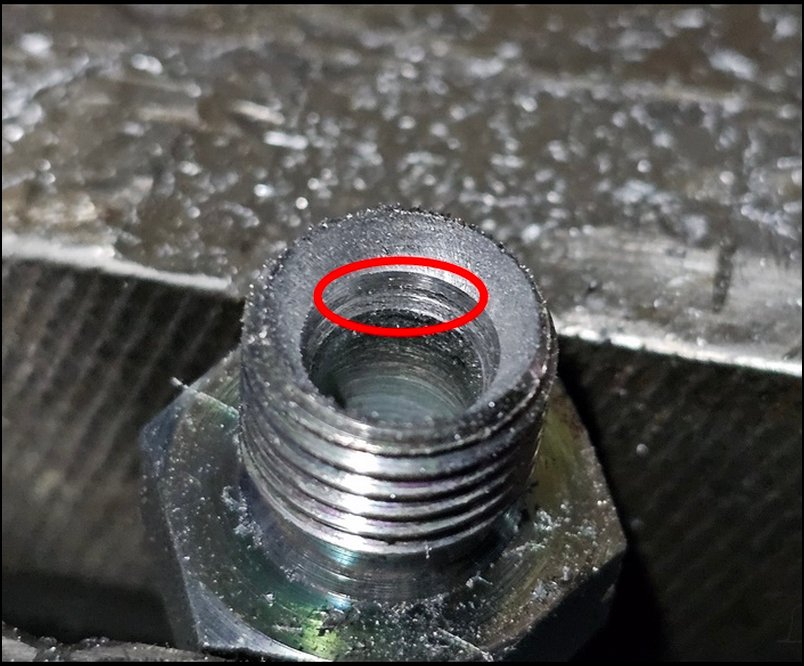
Some 10mm o/d stainless pipe.
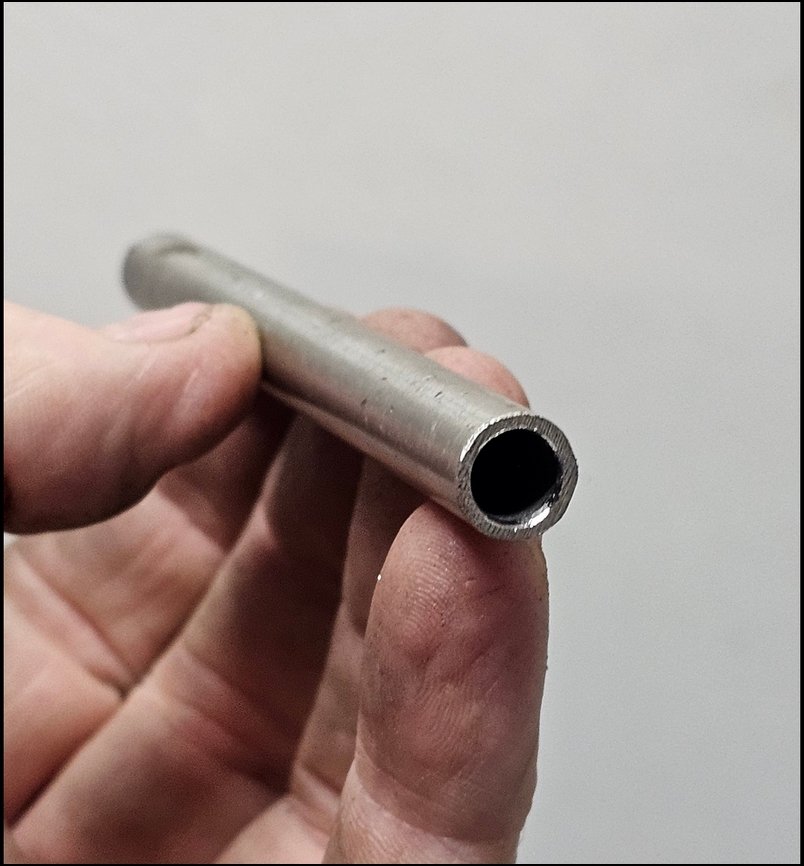
The internal diameter is the same as an AN8 fitting, so won’t restrict flow.
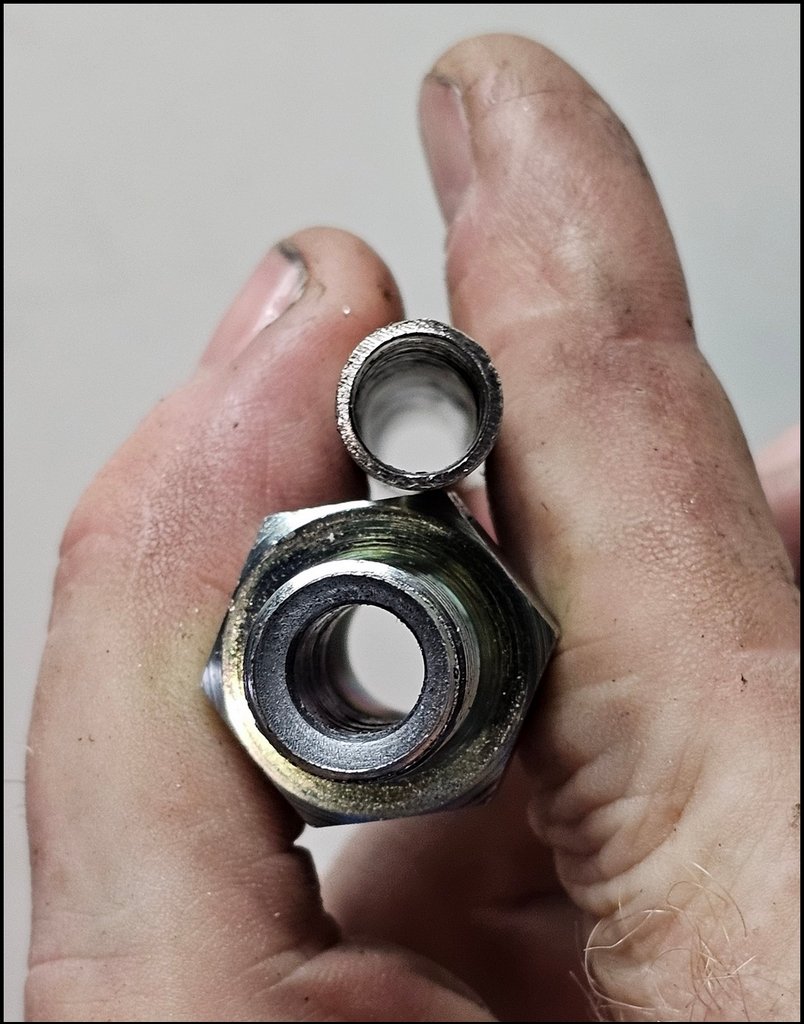
I then TIG welded the pipe into the fitting, ensuring the weld was narrower than the thread.
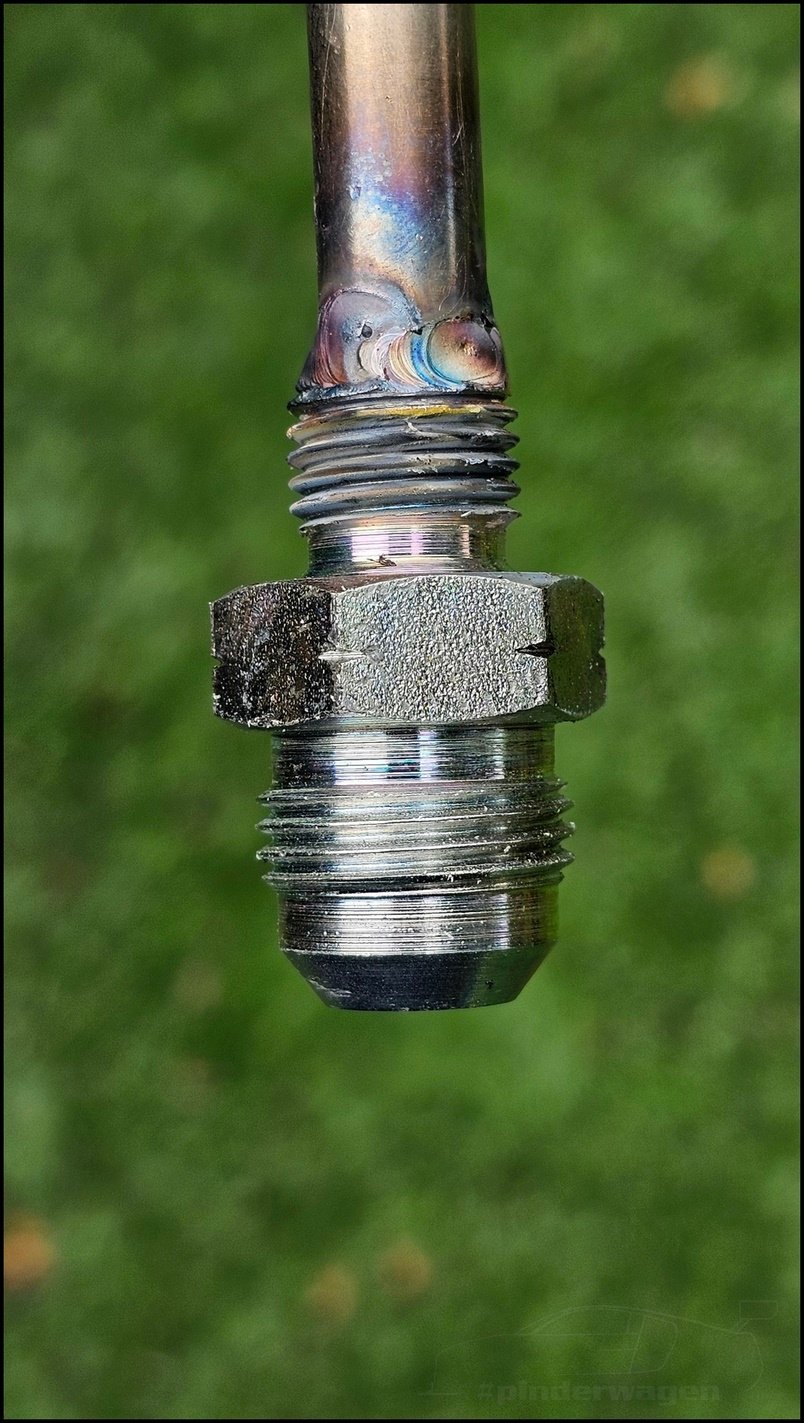
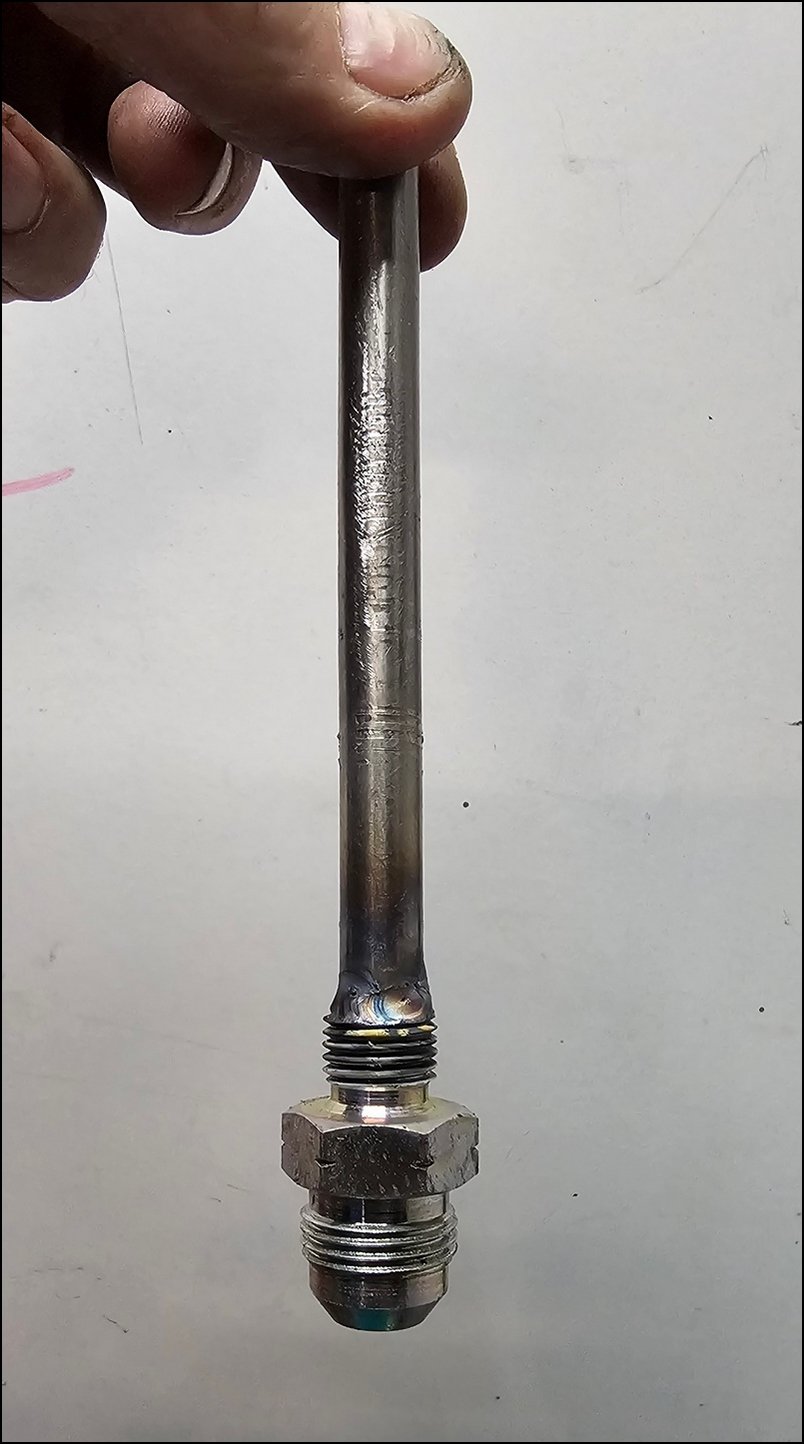
With a copper washer fitted, this was screwed into the bottom of the tank in place of the drain plug.
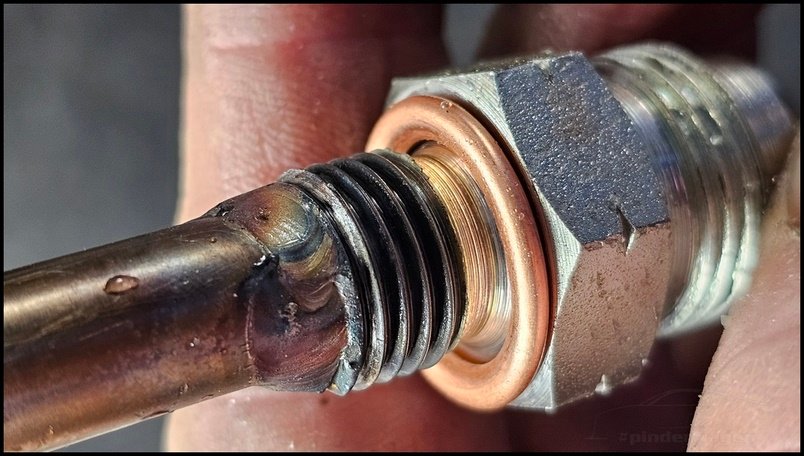
This means I now have an AN8 male fitting at the bottom of the tank which I can use to connect the hose to feed to the new pump.
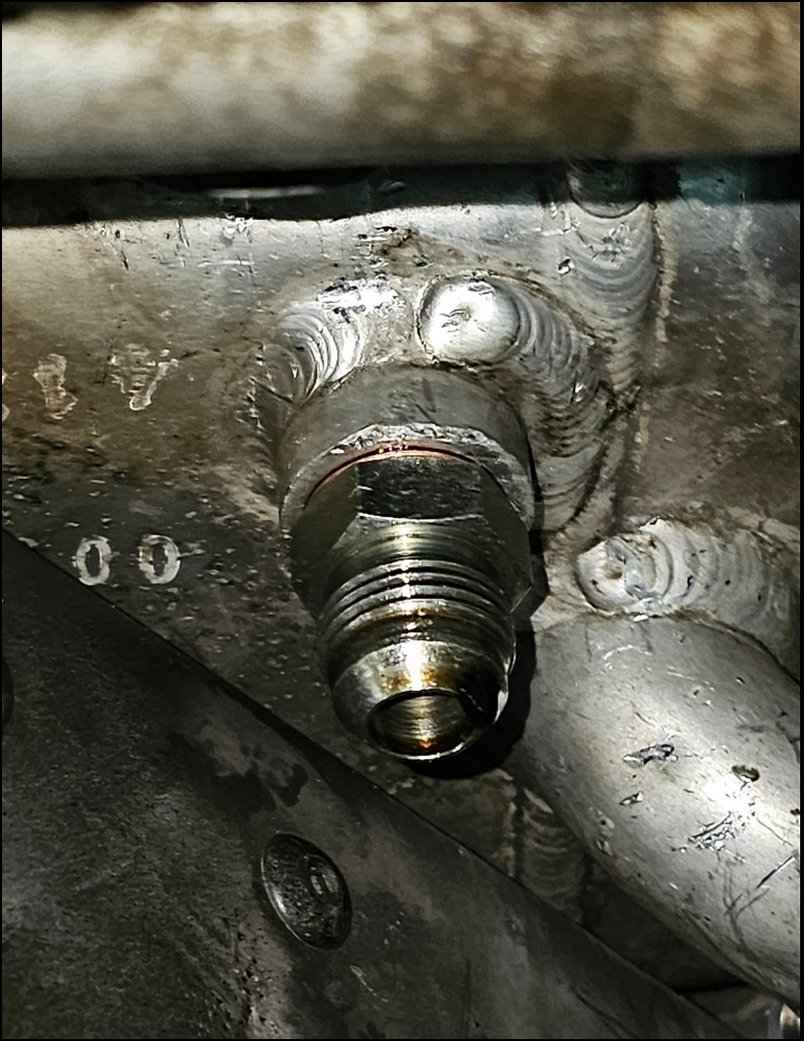
There is a very good reason for welding the pipe onto the fitting. I didn`t want to simply screw in the adapter into the tank as that could affect the oil feed to the main engine oil pump and starving that of oil is not something I want to do ! By adding the piece of pipe, I ensure the oil taken by the secondary pump is nowhere near the original drain point.
To test this, I started refilling the dry sump tank and noted when oil started overflowing out of the AN8 fitting. It took 4.25Litres of oil. That should be plenty of head to keep the main pump feed without any chance of starvation due to the new pump.
The return back to the tank was a problem. There is no extra fitting so I welded and AN8 boss to the side of the tank, just underneath the main return. It is still in the cyclone part but should have no effect of the operation of the stock system.
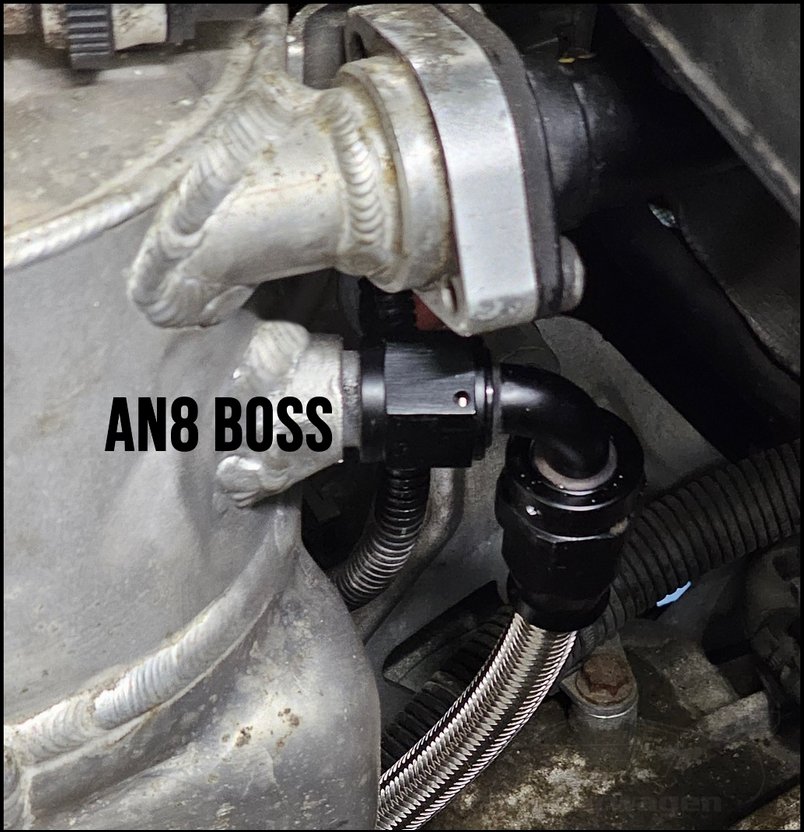
The diagram below shows how the new cooling system integrates with the existing dry sump tank layout. The length of pipe ensures the pump doesn`t affect the oem feed and the new oil return is into the internal baffles and air separator
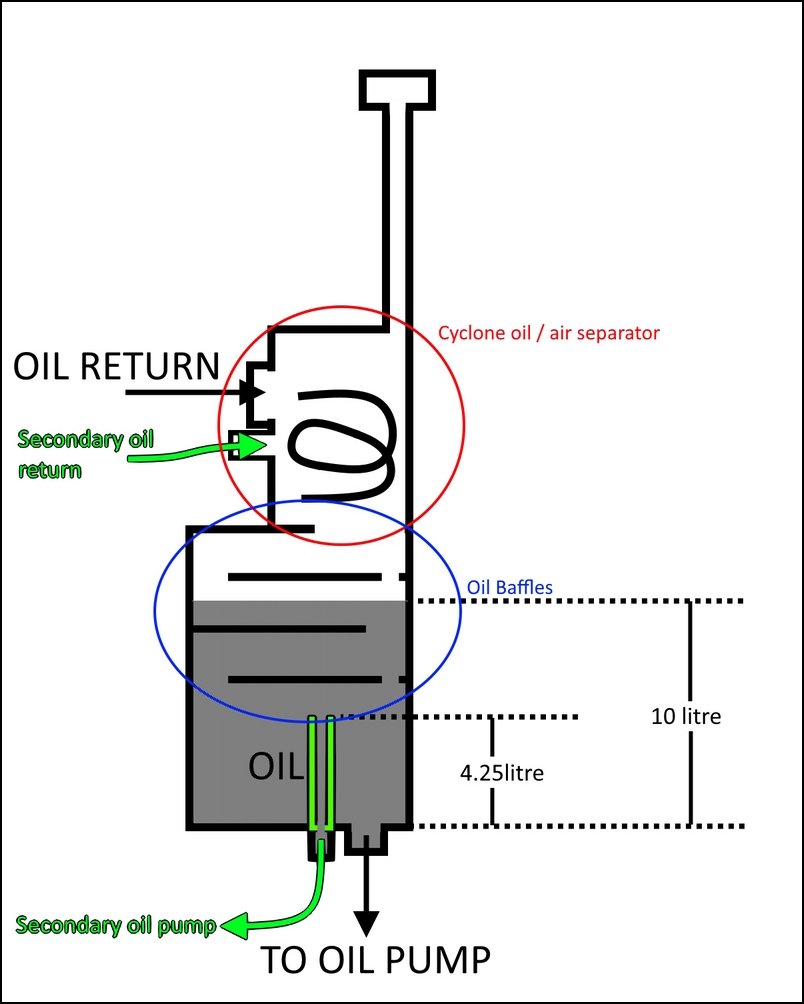
The secondary pump, is a gear pump and they have extremely fine internal tolerances, to ensure no debris damaged the pump I added an inline 250Micron filter. I know the oil in the tank should be clean anyway, but the oil feeding the engine bearings goes through the oil filter, this feed doesn’t. I used one on the Golf gearbox cooling system, they are mesh filters which can be easily split, cleaned and reused.
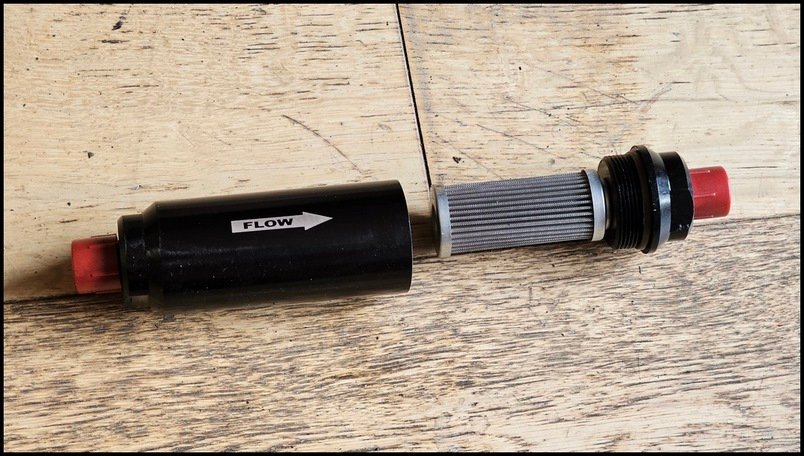
The filter is installed in the line from the tank to the secondary pump.
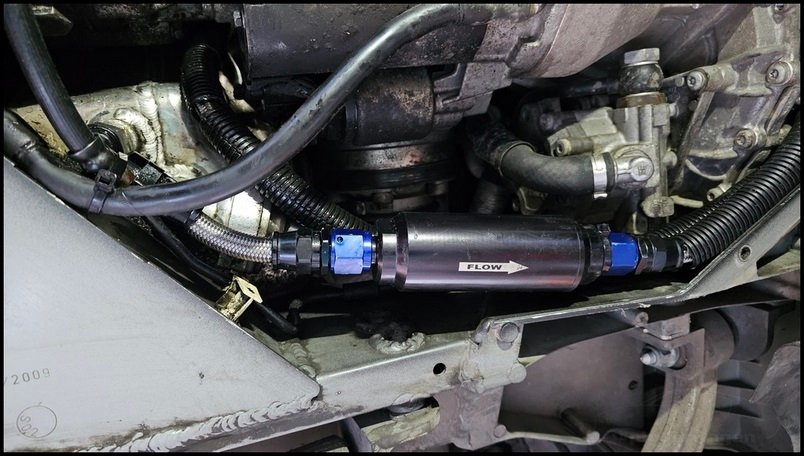
The hose is PTFE lined braided hose but to ensure there was no chance of abrasion damage, I ran it inside plastic sheathing wherever it was close to the chassis.
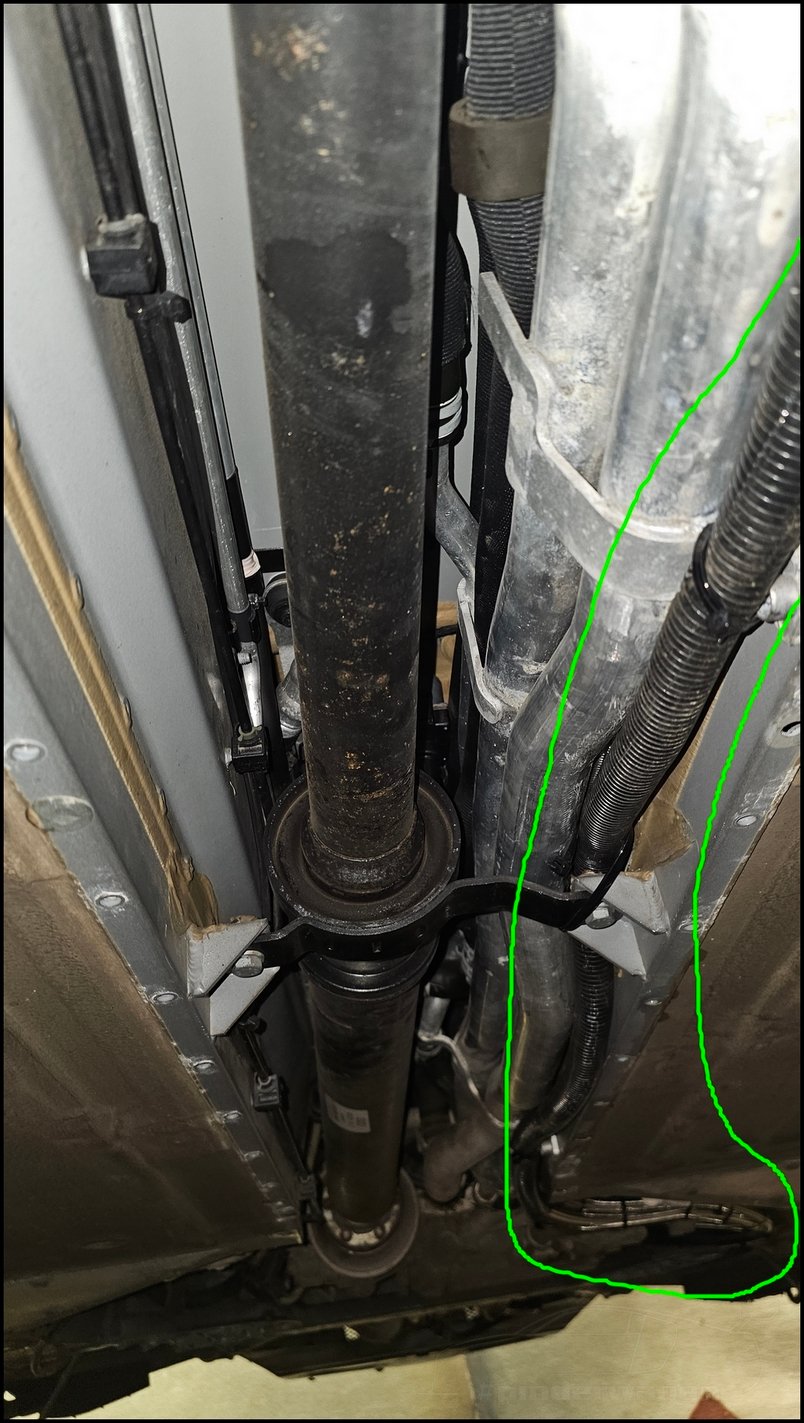
I looped it around the front diff.
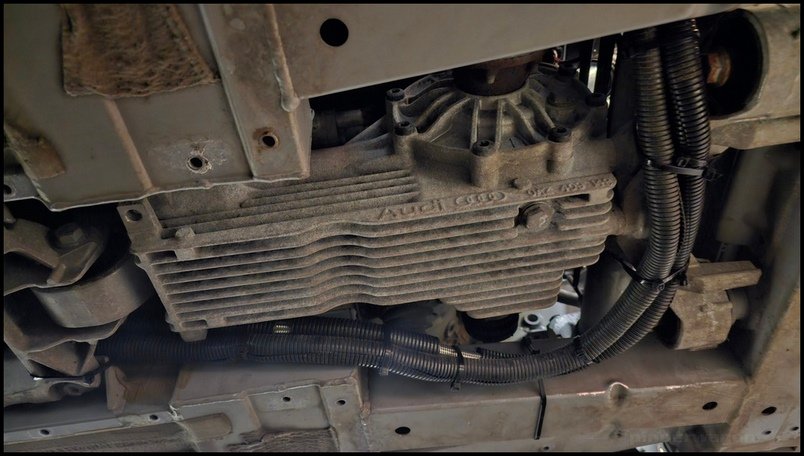
The ‘frunk’ was just touching the gear pump so I heated it with a hot air gun and recessed it from outside.
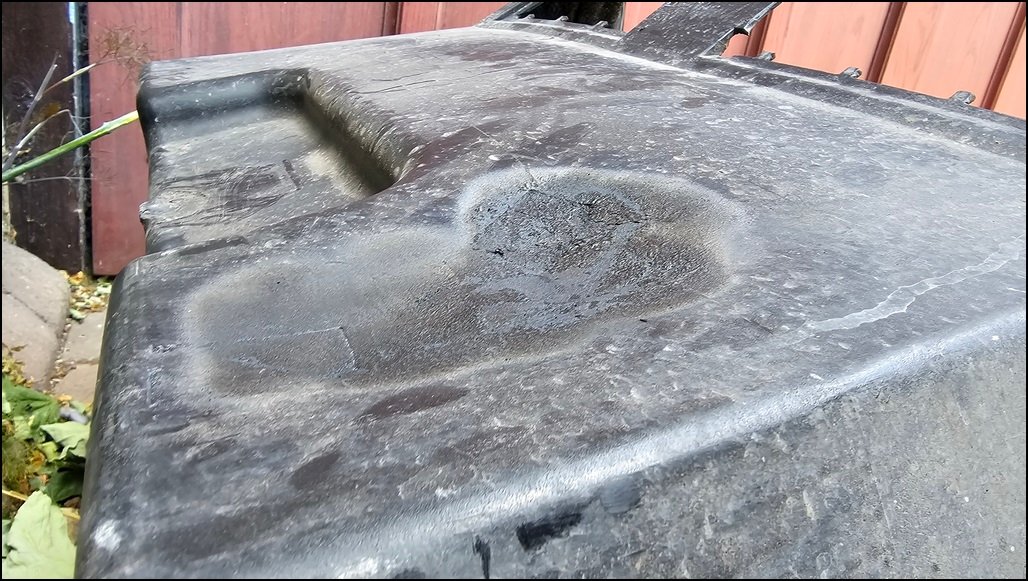
When installed there is now plenty clearance to the pump.
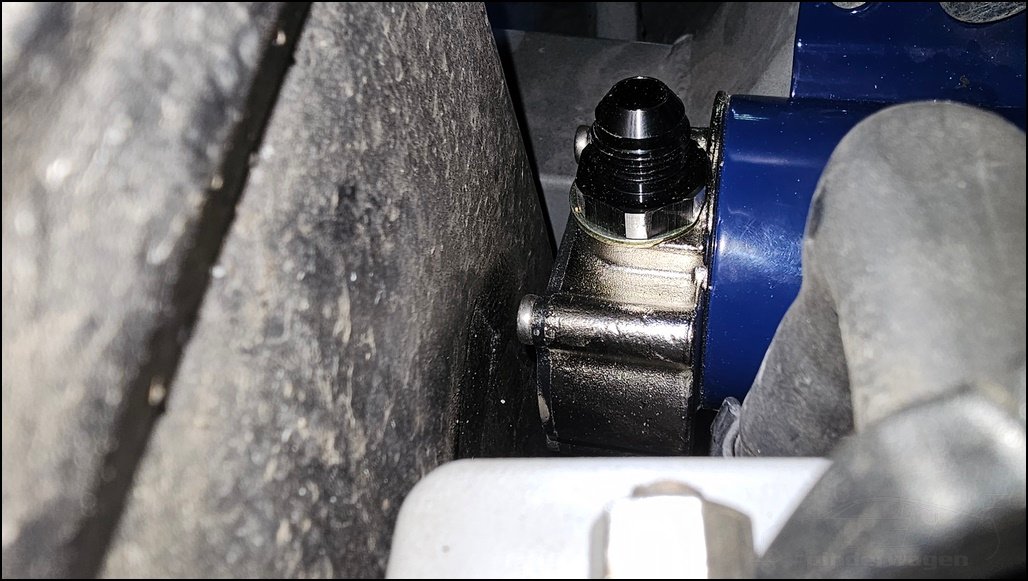
On the inside, you can just see the slight ‘hump’.
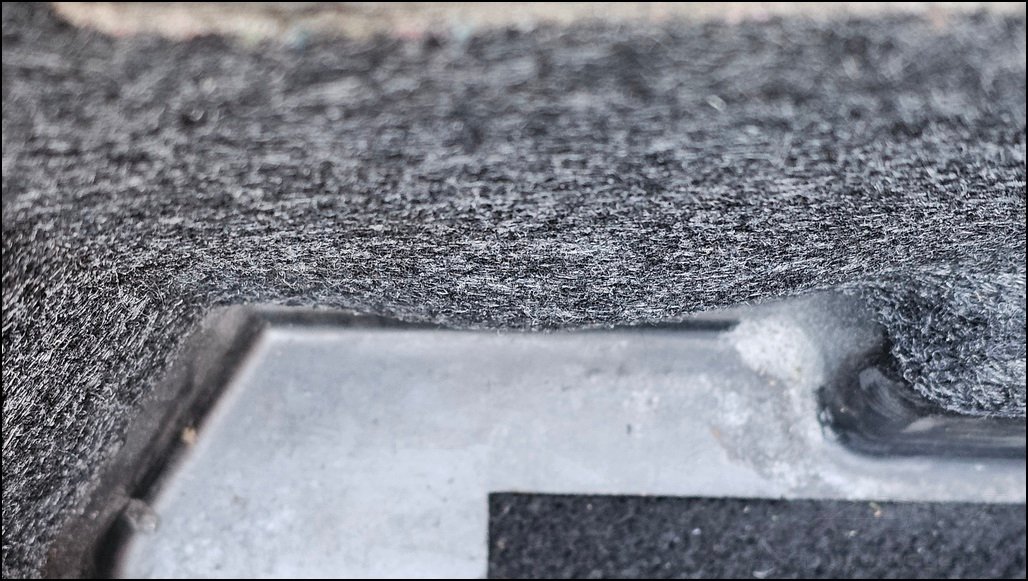
So, the big question. Does it actually work !?
The answer is a resounding yes. My canbus datalogger not only records engine ECU data but also controls the oil pump. This is the temperature traces from 3 laps of the Nurburgring in July. The first 2 laps are with the pump running, oil temp peaks at 125°C. For the 3rd lap, I removed the pump fuse so only the factory cooling was used for a direct comparison, as expected, the oil temp was too high peaking at 142°C. As I was changing the oil after this event I wasn’t concerned, but it reinforced my thinking that the oem setup was not suitable for on track driving. An unexpected benefit of the oil temperature reduction was a slight drop in coolant temperature.
Knocking off 17°C oil temperature is excellent, however I still want more !. The whole benefit of this setup is I can add another cooler in series to the one at the front and there is zero worry about pressure drop. My plan over the winter is to fit an extra cooler in the right hand blade behind the gearbox oil cooler, I think there is sufficient room for an extra cooler. I’ll update this post when I do that on how effective it is (or isn’t)
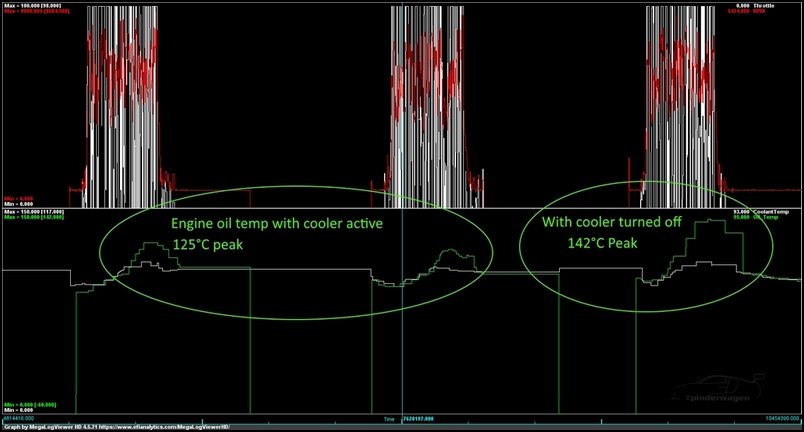
I was unsure just how effective this cooling system would be, it’s not something I’ve seen done before and there is always that feeling of “what am I missing, why has nobody else thought of this?” As it turned out, it does exactly what I planned, it cools the oil a significant amount, the pump can be stopped and started when I want so there is no danger of overcooling the oil on a cold trackday or on the road.
It’s not a simple plug and play solution, but I’ve achieved my goal of leaving the original cooling system alone and this secondary setup can be modified with extra coolers where necessary.
